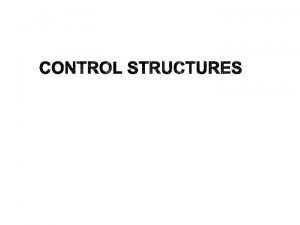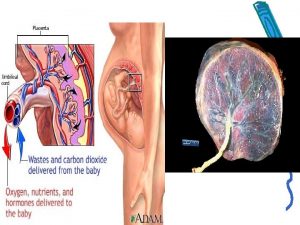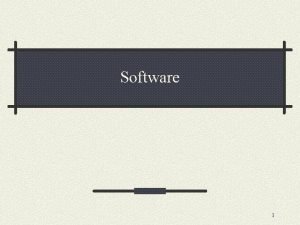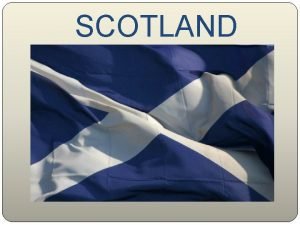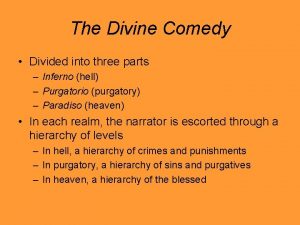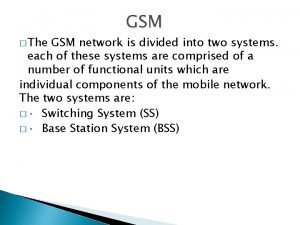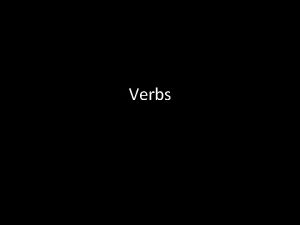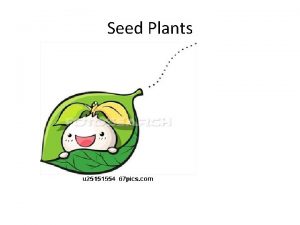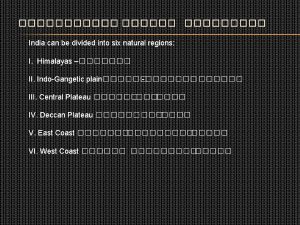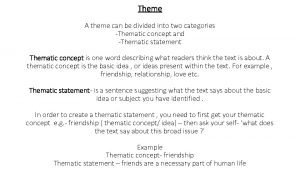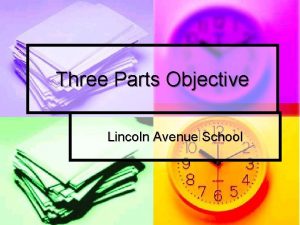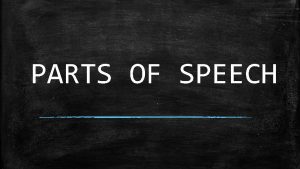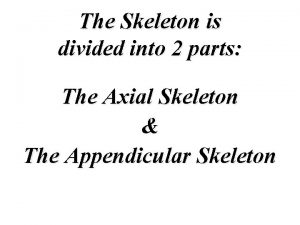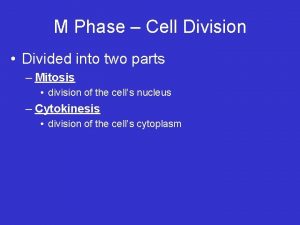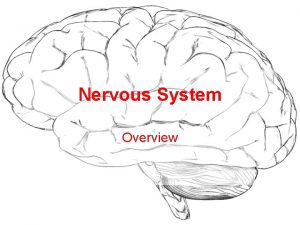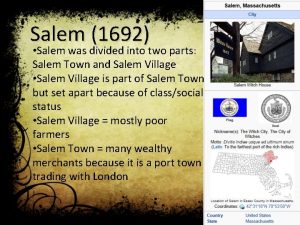Control structure is divided into three parts v














- Slides: 14


Control structure is divided into three parts: v Selection statement v Iteration statement v Jumps in statement

§ Selection statement is also called as Decision making statements because it provides the decision making capabilities to the statements. § In selection statement, there are two types: §if statement §switch statement § These two statements allows you to control the flow of a program with their conditions.

§ The “if statement” is also called as conditional branch statement. § It is used to control program execution through Entry two paths. If (test expression) § It allows the computer to evaluate the Test Condition ? true expression first and then depending on whether the value of the expression is ‘true’ or ‘false’, it transfers the control to particular statement. false

§ The if-statement may be implemented in different forms depending on the complexity of condition to be tested. 1. Simple if Statement 2. If…else Statement 3. Nested if. . . else Statement 4. else if ladder

§ The general form of a simple if statement is… • The ‘Statement-block’ may be a single statement or a group of statements. • If the test expression is true, the statement-block will be executed; • Otherwise the statement-block will be skipped and the execution will jump to the statement-x. if (test expression) { statementblock; } statement-x;

§ The if…else statement is an extension of the simple if statement. • The ‘Statement-block’ may be a single statement or a group of statements. • If the test expression is true, the true-statement-block will be executed; • otherwise the false-statement -block will be executed and the execution will jump to the statement-a. If (condition) { true - Statement block; } else { false - Statement block; } Statement-a;

§ When the series of decisions are involved, we may have to use more than one if…else statement in nested form. If (condition 1) { If (condition 2) { Statement block 1; } else { Statement block 2; } } else { Statement block 3; } Statement 4;

if(condition-1) {//if condition-1 is true } else if (condition-2) {//if condition-2 is true } else if (condition-3) {//if condition-n is true } . . else if (condition-n) {//if condition-n is true } else { //if none of the conditions are true. } Statements which will be executed always

§ The switch statement provides another way to decide which statement to execute next § The switch statement evaluates an expression, then attempts to match the result to one of several possible cases § Each case contains one value (a constant) and a list of statements § The flow of control transfers to statement associated with the first case value that matches

§ The general syntax of a switch statement is: switch and case are reserved words switch ( expression ) { case value 1 : statement-list 1 case value 2 : statement-list 2 case value 3 : statement-list 3 case. . . } If expression matches value 2, control jumps to here

§ Often a break statement is used as the last statement in each case's statement list § A break statement causes control to transfer to the end of the switch statement § If a break statement is not used, the flow of control will continue into the next case § Sometimes this may be appropriate, but often we want to execute only the statements associated with one case

§ An example of a switch statement: switch (option) { case 'A': a. Count++; break; case 'B': b. Count++; break; case 'C': c. Count++; break; }

§ A switch statement can have an optional default case § The default case has no associated value and simply uses the reserved word default § If the default case is present, control will transfer to it if no other case value matches § If there is no default case, and no other value matches, control falls through to the statement after the switch
 Divided into three parts
Divided into three parts William wordsworth is known as a
William wordsworth is known as a What are the districts in paris called
What are the districts in paris called Divided into three categories
Divided into three categories Computer divided into two parts
Computer divided into two parts Into what parts is scotland divided geographically
Into what parts is scotland divided geographically Divine comedy 3 parts
Divine comedy 3 parts The gsm network is divided into
The gsm network is divided into Latin verbs are divided into
Latin verbs are divided into Seed plants are divided into two groups called
Seed plants are divided into two groups called 3 layers of the earth
3 layers of the earth India can be divided into how many regions
India can be divided into how many regions Aca student liability insurance
Aca student liability insurance The text is divided into 2 main themes:
The text is divided into 2 main themes: Kingdoms of israel and judah
Kingdoms of israel and judah
